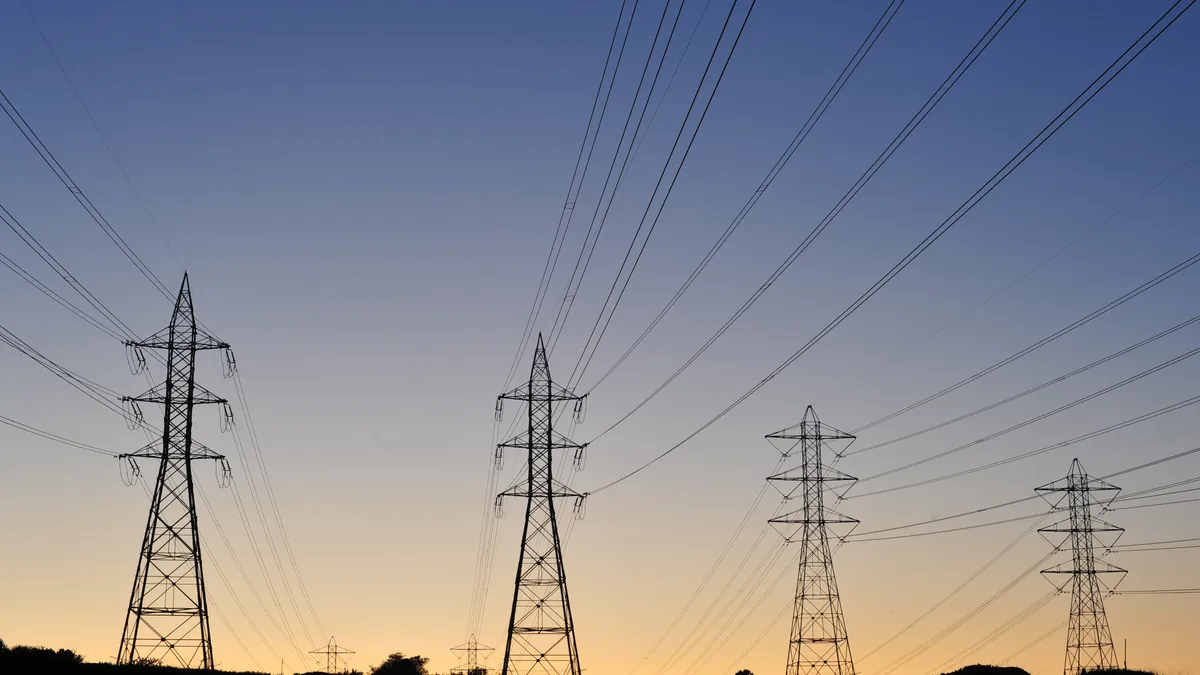Dive Brief:
-
Southeastern vertically-integrated utilities on Friday filed a proposal with North and South Carolina regulators that would form a centralized energy exchange market expected to serve about 50 million customers if approved.
-
Duke Energy, Dominion Energy, Southern Company and the Tennessee Valley Authority are among the utilities that would participate in the market. The utilities plan to file the proposal with the Federal Energy Regulatory Commission by the end of the year.
- Though utilities are calling it the creation of a market, “it’s really more of an energy exchange,” said Kate Konschnik, director of the Climate and Energy Program at Duke University. “So on the one hand, it is pretty modest. On the other hand, it's interesting that a lot of the utilities want to do this right now” in the midst of proposals in the Carolinas calling to open up the markets to more competition, she said.
Dive Insight:
Duke and Southern’s proposal was first reported in July, following discussions in the Carolinas around creating a more open power market. South Carolina’s governor in September signed into law legislation calling for a study on whether electricity market reform could benefit customers in the state. And North Carolina’s Department of Environmental Quality last year released a roadmap following an executive order from Gov. Roy Cooper, D, to study a path to reduce the state's greenhouse gas emissions. The roadmap suggested the state pursued options to increase competition, "including but not limited to joining an existing wholesale market and allowing retail energy choice."
“Potentially, this is in part responding to that,” said Konschnik.
Clean energy and environmental advocates in the state are concerned Duke, Southern and other utilities are using Southeast Energy Exchange Market (SEEM) to control those efforts, and potentially undermine or inhibit them.
“This could be a way for Duke to put in place their definition of a market,” said Peter Ledford, general counsel and director of policy for the North Carolina Sustainable Energy Association. “At least for North Carolina advocates, there’s also a fear of Southern Company dictating North Carolina energy policy as well.”
SEEM would constitute a 15 minute energy “market” that would allow utilities in the region to enter bilateral agreements for excess capacity.
“The result will be cost savings while improving the integration of all energy resources, including renewables, which are expanding rapidly in the Southeast, leading to a cleaner, greener, more robust electricity system,” the joint utilities said in a press release announcing their intent to file with FERC. Utilities estimate it could save customers anywhere from $40 million to $50 million per year in the near term, with the potential to save up to $150 million with higher penetrations of cheap solar resources expected over the next several years.
The potential cost savings are attractive to at least one regulator — Georgia Public Service Commissioner Tim Echols said in an email he was reassured by conversations Georgia regulators had had with experts on the proposal and he doesn’t have “really any reservations” about the idea.
There had also been some trepidation in the Southeast about forming such a market because of the minimum offer price rule (MOPR) expansion in the PJM Interconnection, which Dominion is a part of, said Konschnik.
“When people think about joining a market, the obvious, immediate market that we think of, at least in the Carolinas, is PJM” because of its proximity, she said. “And so the conversations very quickly go to the states down here losing control over capacity planning, [and] the utilities not being able to have a say.”
But those concerns are largely misguided, said Duke and other stakeholders. The MOPR expansion is largely a capacity market problem, said Simon Mahan, executive director of the Southern Renewable Energy Association, in an email, and SEEM would not have a capacity market, at least from the outset.
“Usually the concern has been around SEEM leading to [a regional transmission operator] that would then potentially get MOPR'd, which I know some stakeholders have mentioned,” he said. “but I'm unconcerned and unconvinced it's a problem. We're aware MOPR is a disaster, but we have several other RTO models to emulate to avoid getting MOPR'd. SEEM is the first step in the market reform journey for the southeast."














